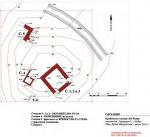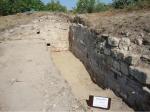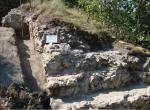Summary (English)
AD PUTEA (Petar Banov – plevenmuseum@dir.bg) The site covered an area of c. 1.3 ha. The mansio was built on the road from Ulpia Oescus to Philippopolis during the 2nd century AD and the adjoining fortified settlement was built after AD 250. An altar with the image of Dionysus, another altar with a votive inscription, a sculpture of Heracles and a leg from a bronze statue of Heracles were found in the past. Clandestine excavations and destroyed walls and buildings were documented on the site. During the explorations, a fortified tower was discovered which probably was three-storey and might have been used as barracks as well. The tower was 13.40 m by 12.25 m in size and its walls were 1.80 m wide built in opus mixtum. The fortified tower did not belong to the fortification wall and it was a separate structure. It was destroyed and subsequently reconstructed, most probably during the reign of Justinian I. A layer up to 50 cm thick was discovered above the floor, consisting of burned timber beams from the collapsed roof and fallen tegulae, 40 cm by 60 cm in size. The finds from the tower comprised an axe, a spearhead, an iron plate from a door, a bronze key, a bronze lamp, a cylindrical bronze sextarium and carbonized remains from a wooden chest full of carbonized grain. Part of a house built in rubble masonry was explored to the southwest of the fortification tower. Two rooms were discovered. The finds from the house comprised pottery, coins of Gallienus, Valens, Theodosius I and Arcadius. Part of fortification wall and adjoining rooms were documented at c. 15 m to the northwest of the fortification tower. The fortification wall was over 1.90 m wide, built of ashlars with a core structure of roughly-cut stones bonded with mortar. The pottery discovered during the excavations dated to the 2nd – 6th centuries AD.
- Petar Banov - Regional Museum of History – Pleven
Director
Team
Research Body
- Regional Museum of History – Pleven






![Download [PDF]](/excavation/skins/fasti/images/results/download_sml.png)

